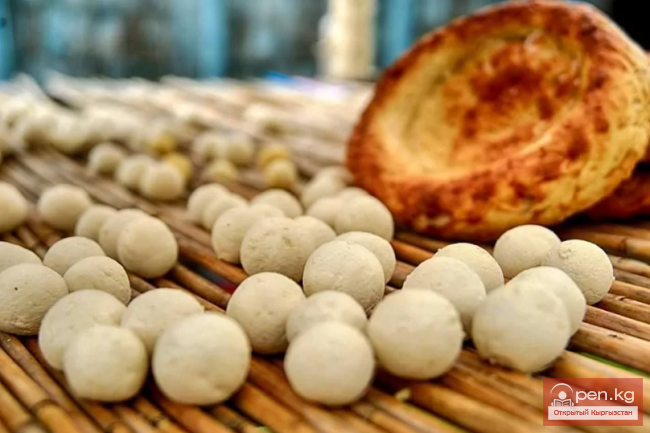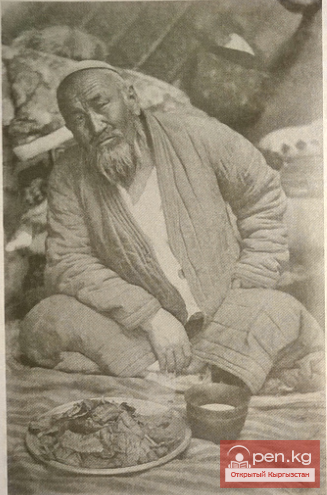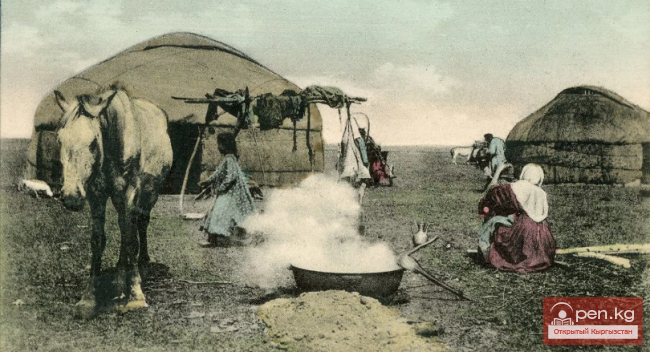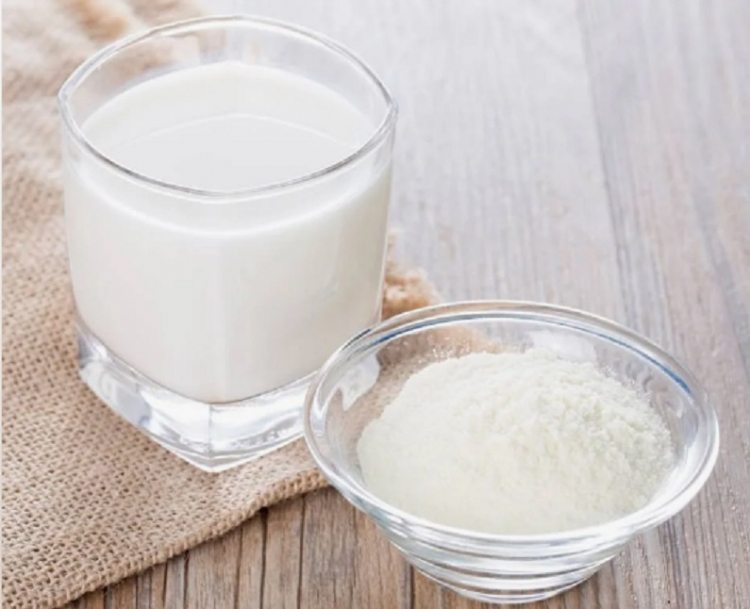Plant-based Food.
In the second half of the 19th century, a significant place in the dietary habits of the Kyrgyz was occupied by plant-based products. Both cultivated and wild plants were used, with cultivated plants playing a dominant role. Research confirms that agricultural skills were well-known among all groups of Kyrgyz. Agriculture was most widespread in the regions of the Ferghana Valley, Ketmen-Tyube, Talas, and Issyk-Kul valleys.
In the southern regions of Kyrgyzstan, they grew and consumed wheat, corn, millet, rice, alfalfa, and melons; in the north, wheat, millet, and barley, with a small amount of oats and alfalfa. Oat cultivation appeared in the second half of the 19th century under the influence of Russian settlers (Abramzon, 1990. P. 88, 89).
The diet included dishes made from whole grains of millet, flour un, and groats akgiak. In particular, from whole grains (millet, wheat, barley), they prepared everyday food: khozho (porridge), saksay or kopturmё (a type of pilaf), from groats - shorpo khozho, sut khozho (milk porridge), bortmё taruu (milk porridge made from crushed millet), bortmё botko (porridge), zhanchymal (made from roasted grains with added oil and milk), as well as ritual dishes khozho (porridge made from colostrum), oruzdama (chon khozho, sumolёk). These dishes were popular in all regions of Kyrgyzstan, including among nomadic groups. Uuz khozhe was usually prepared after the calving of large cattle or the lambing of sheep, and all neighbors were invited to the feast or food was shared with them in small bowls. The dish oruzdama was exclusively associated with calendar rituals.
It was prepared only once a year, during the celebration of the New Year according to the lunar calendar, which fell on March 20.
Another type of porridge was made from konok - Italian millet (megara), known as konok ash. The grains of this type of millet are smaller than ordinary millet and have a reddish color. They were crushed in a mortar and then steamed. Konok ash was mainly consumed by the poor (Kochkunov, 2003. P. 10).
Other common dishes included porridge - botko made from millet, most often or from barley, as well as from Italian millet. The dish zhanchymal was prepared using a complex technology. Millet was boiled, then sifted through a sieve and roasted, pounded several times, cream was added, and then it was pounded again in a mortar, and the resulting mass was consumed (Kochkunov, 2003. P. 10). Saksay was prepared as follows: hulled millet was boiled in milk, a small amount of melted butter was added, covered, and kept warm for a long time, then consumed.
Many of the mentioned dishes included oil, cream (sour cream), and sour milk. In very poor families, food was prepared exclusively with water. Food made from millet and millet was popular among almost all groups of Kyrgyz, indicating that they had been able to grow millet since ancient times.
By the end of the 19th century, in all regions of Kyrgyzstan where agriculture had become an integral part of the economy, the share of flour dishes in the diet of the population significantly increased. In those areas where agriculture was absent due to harsh climatic conditions and lack of fertile land (mainly the interior regions of the Tien Shan), flour dishes were not widespread. People bought flour products or exchanged them for livestock products. In any case, as literary sources indicate, by the end of the 19th century, almost all groups of Kyrgyz consumed flour dishes. The proportion of these in the diet naturally varied.
From the ground grains, two types of products were obtained: flour itself - un and crushed grain - talkan. From wheat and barley flour, various batters were mainly made - atala (varieties - kurut atala, zharma atala, zhilma atala, khozho atala, etc.), and soups - umach (varieties - sut umach, umach atala, etc.), as well as thick porridge from roasted flour - tarkhalva (Kochkunov, 2003. P. 10). The dish mai talkan, or talkan, became widely popular. For this, talkan (crushed grain) was boiled in sour cream (kaymak), but most often a small amount of crushed grain was mixed with boiled water, added oil or cream and sugar, thoroughly mixed, and consumed - maiga koolen'gon talkan, kaymakka koolen'gon talkan. This recipe was also used during military campaigns, hunting, and long journeys. Crushed grain was often used as a seasoning in kumys, chalap, zharma, and other drinks to add more nutrition.
Another type of talkan - made from corn flour was used as a ritual dish in connection with the birth of a child. It was served to guests who came for the viewing, or guests took small portions with them. Women gave part of this talkan to their children, while others were sprinkled on tor - the honored place in the yurt opposite the entrance, with the wish to have even more children.
In the second half of the 19th century, dishes made from rolled dough began to be included in the Kyrgyz diet, primarily spreading in the Chui Valley (among the Solto tribe), Talas Valley (among the Saruu, Kushchu tribes, and the Alakchyn clan), as well as in the Ferghana regions of the South. And in the first quarter of the 20th century, almost throughout the country, dishes made from dough boiled in water, broth, and partially in milk were found. The names of these dishes varied: khozho, gulche (kulchetai), kesme, jayma ash, kesme atala, etc., each of which has several variations. For example, khozho is divided into kesken khozho - torn dough (torn pieces), sut khozho - dough boiled in milk, and others. Sometimes sour milk, suzmё, diluted in water kurut was added to such dishes, making the food more nutritious and tastier. In most cases, these dishes had a liquid consistency and were consumed immediately after cooking. Rolled dough, cut into strips or squares, began to be filled with finely chopped meat - this is tuuragan et, or beshbarmak. This dish was especially popular among the Kyrgyz of the Chui and Talas valleys, bordering the southern Kazakh tribes. All this food was prepared from unleavened dough.
In the early 20th century, dough dishes firmly established themselves in the diet of the Kyrgyz. They began to be prepared with finely chopped meat, potatoes, and various spices and seasonings were added. The first among them is gulchetai - a complex composite dish, kesme or kesme ash.
Meat Diet of the Kyrgyz in the 19th Century.
















































